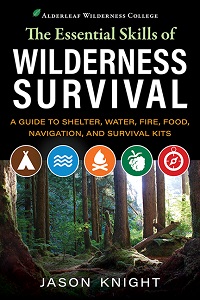Discover how hiking can help the environment by reducing air pollution, preventing soil erosion, conserving natural resources, encouraging wildlife preservation, and supporting sustainable practices.
The environment is like a breath of fresh air, vital to our survival and well-being. For generations, individuals have been taking part in activities that benefit the environment such as hiking.
Hiking has become an important factor for protecting the environment as it works to reduce air pollution, prevent soil erosion, conserves natural resources, encourages wildlife preservation, and supports sustainable practices.
Embarking on a journey into nature can be extremely beneficial for those looking to make a difference in preserving our environment and its beauty.
Key Takeaways
- Hiking reduces air pollution from combustion engine vehicles
- Planting vegetation, creating trails, and building retaining walls or terraces help prevent soil erosion
- Hiking minimizes water use, protects habitats, and conserves natural resources
- Observing and appreciating native species, reducing soil erosion, and supporting sustainable practices encourage wildlife preservation and long-term sustainability.
In This Article
Reducing Air Pollution
The use of hiking as a means of transportation can reduce the amount of air pollution generated from traditional combustion engine vehicles. Carbon dioxide and other pollutants released from these engines contribute significantly to climate change, acid rain, and smog.
Hiking is an effective way to reduce emissions while also enjoying the outdoors and protecting biodiversity. By choosing to hike instead of drive, individuals can directly help safeguard the environment by decreasing their personal contribution to air pollution. Hiking also encourages people to be more mindful about their own impact on their surroundings and can inspire others to do the same.
In addition, hiking allows people to experience nature in its raw beauty while connecting with it in an intimate manner that cannot be found elsewhere. Thus, hiking is not only beneficial for reducing emissions but for protecting the environment as a whole.
Preventing Soil Erosion
Soil erosion can be prevented by engaging in activities such as hiking. Hiking helps to maintain the delicate balance of nature and protect natural resources. By reducing soil erosion, hikers are able to keep their environment healthy and safe for generations to come.
- Planting vegetation helps to reduce the amount of rainwater that washes away soil particles.
- Creating trails prevents people from walking off-trail, which can help minimize the effects of soil erosion.
- Building retaining walls or terraces can also help stop water running over a hillside and eroding the soil.
- Cover crops planted on hillsides act like sponges, absorbing excess moisture and preventing it from washing away valuable topsoil.
- Maintaining existing trails can also help prevent further erosion by providing a path for hikers to stay on while minimizing contact with the surrounding terrain.
Hiking is an essential part of preserving our environment and preventing soil erosion from occurring, thus protecting precious resources for future generations.
Conserving Natural Resources
Conservation of natural resources is essential for preserving the planet’s delicate balance and protecting its inhabitants.
Hiking is an activity that can help with this goal by minimizing water use, leading to reduced water pollution.
Additionally, hikers often take an interest in protecting habitats they come across on their journeys, which helps prevent overharvesting of certain plant species or disruption of animal populations.
Even something as simple as picking up trash left behind by other people can help conserve natural resources on trails around the world.
In addition, hikers tend to be educated about the importance of maintaining a clean environment and are more likely to take action when confronted with environmental issues.
For these reasons, hiking is a great way to both enjoy nature and do your part in protecting it at the same time.
Encouraging Wildlife Preservation
Preserving wildlife is an important part of environmental protection. Among the primary reasons for hiking’s contribution to this cause is that it allows people to observe and appreciate native species in their natural habitats. This appreciation often leads to a greater understanding of the importance of protecting these animals, plants, and other forms of life.
Additionally, when people are out on hikes they tend to respect the environment more by not leaving behind litter or damaging vegetation. Furthermore, hikes can help protect plant diversity by reducing soil erosion and encouraging healthy growth cycles.
Supporting Sustainable Practices
Hiking can play a role in supporting sustainable practices by reducing soil erosion and encouraging healthy growth cycles. The trail, when maintained properly, can minimize waste and promote recycling of materials used in the process. A two-column, five-row table helps evoke an emotional response from the audience:
| Sustainable Practices | Benefits |
|—————————-|————-|
| Minimizing Waste | Cleaner Environment |
| Recycling | Fewer Resources Used |
| Proper Maintenance | Lower Impact on Wildlife |
| Reduce Soil Erosion| Long Term Sustainability |
| Healthy Growth Cycles | Better Air Quality |
In other words, hiking is a powerful tool for promoting sustainable practices that ensure a cleaner environment with fewer resources used and lower impacts on wildlife. By minimizing waste, recycling materials where appropriate, maintaining trails properly, reducing soil erosion and encouraging healthy growth cycles we are ultimately protecting our planet’s future and creating better air quality for all.
Before You Go
The evidence is clear that hiking can play an important role in preserving and protecting the environment. Hiking can reduce air pollution, prevent soil erosion, conserve natural resources, encourage wildlife preservation, and support sustainable practices.
It also serves as an important reminder of our responsibility to protect the planet we call home. By engaging in this activity with a mindful approach, hikers can make sure not to disturb the delicate balance of nature while still enjoying its beauty.
With the right attitude and respect for nature’s gifts, hiking can be a powerful tool for environmental conservation and sustainability.
The Essential Skills of Wilderness Survival

The Essential Skills of Wilderness Survival will empower you to survive emergencies and grow deeper connections to nature, with expert instructor, Jason Knight of Alderleaf Wilderness College
You’ll discover skills that could save your life and the lives of those around you, so that you make it through challenges alive and safe, and can fully enjoy the freedom of exploring the backcountry, without worry.



We are participants in the Amazon Services LLC Associates Program, an affiliate advertising program designed to provide a means for sites to earn advertising fees by advertising and linking to Amazon.com